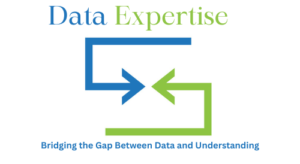In today’s fast-paced digital landscape, marketing analytics has become an indispensable tool for businesses looking to gain a competitive edge. By leveraging data-driven insights, companies can better understand customer behavior, optimize marketing campaigns, and ultimately drive growth. This comprehensive guide explores the essential tools and strategies you need to succeed in marketing analytics.
Introduction to Marketing Analytics
Marketing analytics involves measuring, managing, and analyzing marketing performance to maximize its effectiveness and optimize return on investment (ROI). By utilizing marketing analytics tools and strategies, businesses can make data-driven decisions and improve their marketing efforts.
Marketing analytics enables organizations to uncover valuable insights into consumer behavior and preferences. With the right tools and strategies, marketers can track key metrics, evaluate campaign performance, and make informed decisions to drive success. Businesses can create more personalized and targeted marketing strategies that resonate with their audience by analyzing data across various channels and touchpoints.
The Importance of Marketing Analytics
In today’s competitive business environment, understanding the importance of marketing analytics is crucial for any organization. By leveraging data, companies can:

- Enhance Decision-Making: Data-driven insights enable marketers to make informed decisions that drive business growth.
- Improve Customer Engagement: By understanding customer behavior, businesses can create more personalized and targeted marketing campaigns.
- Optimize Marketing Spend: Analytics helps identify which channels and strategies deliver the best ROI, enabling more efficient allocation of resources.
- Identify Trends and Opportunities: By analyzing data, marketers can uncover emerging trends and capitalize on new opportunities.
Embracing marketing analytics allows businesses to stay agile and responsive in a rapidly changing market. By continually monitoring performance and adjusting strategies, companies can adapt to consumer preferences and industry trends, ensuring sustained growth and success.
Key Marketing Analytics Tools
To effectively harness the power of marketing analytics, businesses must utilize a range of tools designed to capture and analyze data. Here are some essential marketing analytics tools:

Google Analytics
Google Analytics is a widely used web analytics tool that provides insights into website traffic and user behavior. It allows marketers to track key metrics, such as page views, bounce rates, and conversion rates, helping them understand how users interact with their website.
Google Analytics offers customizable dashboards and reports, enabling businesses to visualize data and identify trends. By integrating with other platforms, such as Google Ads, it provides a comprehensive view of marketing performance, helping marketers optimize their campaigns for better results.
HubSpot
HubSpot is an all-in-one marketing, sales, and customer service platform that offers robust analytics capabilities. It helps businesses track customer interactions, measure campaign performance, and optimize marketing strategies.
HubSpot’s analytics features include contact tracking, attribution reporting, and campaign analytics. By providing a holistic view of the customer journey, HubSpot enables businesses to create personalized experiences and improve customer engagement.
Adobe Analytics
Adobe Analytics is a powerful tool for analyzing customer data across multiple channels. It provides deep insights into customer behavior, helping businesses optimize their marketing efforts and improve ROI.
With advanced segmentation and real-time reporting, Adobe Analytics enables marketers to track the performance of their campaigns and identify opportunities for improvement. Its predictive analytics capabilities allow businesses to anticipate customer needs and deliver more personalized experiences.
SEMrush
SEMrush is a comprehensive digital marketing tool that offers features for SEO, PPC, content marketing, and social media analytics. It helps businesses analyze their competitors, track keyword performance, and optimize their online presence.
SEMrush’s analytics features include keyword tracking, backlink analysis, and site audits. By providing actionable insights into online performance, SEMrush enables businesses to improve their search visibility and drive more traffic to their website.
Essential Marketing Analytics Strategies
Implementing effective marketing analytics strategies is key to unlocking the full potential of your data. Here are some essential strategies to consider:
Customer Segmentation
Customer segmentation involves dividing your audience into distinct groups based on characteristics such as demographics, behavior, and preferences. By understanding the unique needs of each segment, businesses can tailor their marketing efforts and deliver more personalized experiences.
Customer segmentation enables marketers to create targeted campaigns that resonate with specific audiences. By analyzing data and identifying patterns, businesses can refine their messaging and optimize their marketing strategies for each segment, resulting in improved engagement and conversion rates.
Predictive Analytics
Predictive analytics uses historical data and statistical algorithms to forecast future outcomes. By leveraging predictive analytics, businesses can anticipate customer behavior, identify trends, and make proactive decisions.
Predictive analytics empowers marketers to optimize their campaigns and allocate resources more effectively. By predicting future trends and customer needs, businesses can stay ahead of the competition and deliver timely and relevant marketing messages that drive results.
A/B Testing
A/B testing involves comparing two versions of a marketing element, such as a webpage or email, to determine which performs better. By testing different variations, marketers can optimize their content and improve conversion rates.
A/B testing provides valuable insights into what resonates with your audience. By experimenting with different headlines, calls-to-action, and visuals, businesses can refine their marketing strategies and achieve better results. This data-driven approach allows marketers to make informed decisions and continuously improve their campaigns.
Attribution Modeling
Attribution modeling is the process of assigning credit to different touchpoints in the customer journey. By understanding how each interaction contributes to a conversion, businesses can optimize their marketing strategies and allocate resources more effectively.
Attribution modeling helps marketers identify which channels and campaigns drive the most value. By analyzing the customer journey and assigning appropriate credit, businesses can optimize their marketing mix and improve ROI. This holistic view enables marketers to make data-driven decisions and maximize the impact of their marketing efforts.
Real-Time Data and Its Impact on Marketing

Real-time data allows businesses to make immediate decisions and optimize marketing strategies on the fly. By leveraging real-time data, companies can respond to customer behavior, adjust campaigns, and capitalize on emerging opportunities.
Real-time data provides marketers with instant insights into customer interactions and campaign performance. By monitoring metrics in real time, businesses can identify trends, optimize their strategies, and deliver personalized experiences. This agility enables marketers to stay ahead of the competition and drive better results.
Challenges and Opportunities in Marketing Analytics
While marketing analytics offers numerous benefits, it also presents challenges and opportunities that businesses must navigate to succeed:
Challenges:
- Data Privacy: Ensuring compliance with data privacy regulations is essential for maintaining customer trust. As privacy laws become stricter, companies must adopt robust data governance practices.
- Data Integration: Combining data from multiple sources can be complex and time-consuming. Businesses need to invest in integration tools that streamline this process and provide a unified view of customer interactions.
- Data Quality: Ensuring the accuracy and reliability of data is crucial for making informed decisions. Implementing data quality tools and processes helps maintain the integrity of data used for analysis.
- Skill Gaps: Developing the necessary skills to analyze and interpret data is essential for effective marketing analytics. Businesses should invest in training and development programs to build analytics capabilities within their teams.
Opportunities:
- Enhanced Customer Insights: Marketing analytics provides opportunities to gain deeper insights into customer behavior and preferences, enabling more personalized and targeted marketing strategies.
- Improved Campaign Performance: By leveraging analytics, businesses can optimize marketing campaigns in real time, leading to improved performance and higher ROI.
- Innovation and Growth: Analytics empowers businesses to identify emerging trends and new opportunities, driving innovation and growth.
- Competitive Advantage: Companies that effectively leverage marketing analytics gain a competitive edge by making data-driven decisions that enhance customer experiences and drive business success.
By addressing challenges and seizing opportunities, businesses can unlock the full potential of marketing analytics and achieve meaningful results. This requires a strategic approach, investment in the right tools, and a commitment to continuous learning and improvement.
The Future of Marketing Analytics
The future of marketing analytics is bright, with several trends shaping the landscape:
- AI and Machine Learning: These technologies will enhance analytics capabilities, enabling more accurate predictions and personalized marketing experiences.
- Data Democratization: Making data accessible to all stakeholders will empower teams to make data-driven decisions.
- Integration of IoT Data: Leveraging data from connected devices will provide deeper insights into customer behavior and preferences.
- Advanced Customer Journey Mapping: Understanding the entire customer journey will enable businesses to deliver more personalized and seamless experiences.
As technology continues to evolve, businesses must stay informed about emerging trends and adapt their marketing analytics strategies accordingly. By embracing innovation and leveraging the latest tools and techniques, companies can remain competitive and drive long-term success.
Conclusion
Marketing analytics is an essential component of modern business strategy. By leveraging data-driven insights, companies can optimize their marketing efforts, improve customer engagement, and drive growth. With the right tools and strategies, businesses can navigate the complex landscape of marketing analytics and achieve their goals.
What do you mean by marketing analytics?
Marketing analytics involves measuring, managing, and analyzing marketing performance to maximize its effectiveness and optimize return on investment (ROI)
Why is marketing analytics important?
Marketing analytics enables businesses to make data-driven decisions, improve customer engagement, optimize marketing spend, and identify trends and opportunities
What are some popular marketing analytics tools?
Some popular marketing analytics tools include Google Analytics, HubSpot, Adobe Analytics, and SEMrush
What is customer segmentation?
Customer segmentation involves dividing an audience into distinct groups based on characteristics such as demographics, behavior, and preferences
What is A/B testing?
A/B testing involves comparing two versions of a marketing element to determine which performs better and optimize content and conversion rates





